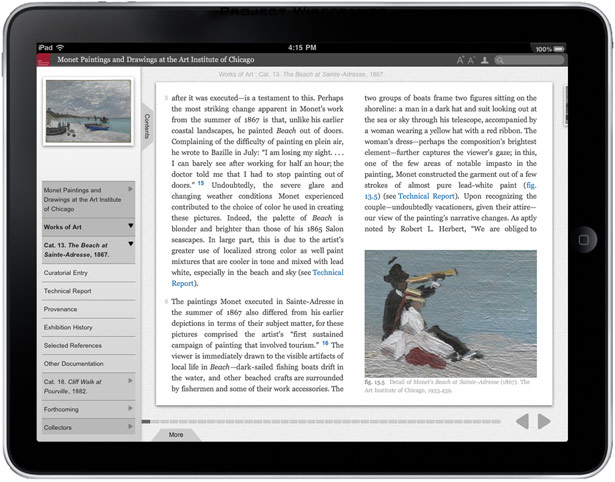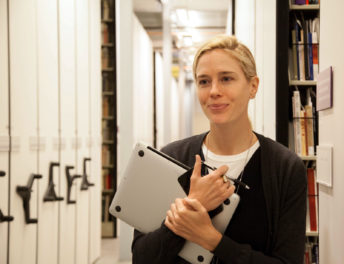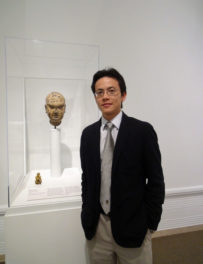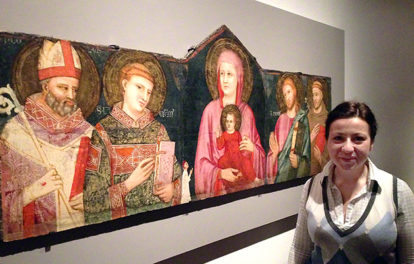How does the museum collections catalogue, traditionally made for print, fit into today’s world of apps, e-books, and iPhones? It turns out that going digital requires a profound rethinking of the ways in which art historical content can be interactively organized, created, and maintained, yet museums lack models for moving collection catalogues online. Through the Getty Foundation’s Online Scholarly Catalogue Initiative (OSCI), a group of nine museums, including the J. Paul Getty Museum, are working together to address the problem by creating new prototypes for scholarly catalogues in the online environment. The initiative launched in 2009 with a planning phase, during which the participating museums developed their own catalogues while also tackling shared problems together in regular meetings.
The OSCI museums are now moving into implementation of their projects, but already during the planning phase they faced difficult challenges and discovered solutions from which the larger museum field will benefit. An interim report on the initiative can be found here.
To mark the occasion of the release of the report, I caught up with Nik Honeysett, head of administration at the J. Paul Getty Museum, to hear his insights on OSCI at the Getty Museum, and how the initiative is shaping the way museums are implementing digital publishing.
Why did the J. Paul Getty Museum decide to move forward with online collection catalogues?
It’s difficult to pin down the moment when we decided an online catalogue was a resource-worthy initiative. There was a point when, looking at emerging trends in publishing, technology, scholarly consumption, and research expectations, we felt we had to commit to focusing our attention on the online delivery of a scholarly catalogue. This work became part of a larger collaborative effort with the launch of OSCI in 2009.
What were the major challenges for the Getty Museum in developing a prototype?
One major challenge was figuring out who owns the project. A printed scholarly catalogue clearly sits in Getty Publications, but the production of an online scholarly catalogue is equally close to our Collection Information & Access department.
The other challenge was project staffing. Turnover is natural in any institution, but multi-year projects are much more susceptible to it. In the periodic convenings organized by the Getty Foundation for OSCI participants, we found each museum faced these challenges in varying degrees.
How critical is senior and executive-level support for such a project?
High-level support is essential, whether it be someone who will drive a project to completion or a leader who will champion its cause, building consensus to get the desired result. In our case, we had that executive support, but there was equally a desire from many departments within the Museum to address the intellectual and technological challenge of thinking through and delivering an online scholarly catalogue.
How do you define “audience” for an online publication?
The Getty’s first online catalogues are being developed with our traditional notion of art scholar or researcher as the primary audience, but subsequent catalogues may be developed with a completely different idea of who the consumers might be. We can’t predict what type of “accidental audience” we’ll get. The challenge is that you’re publishing a body of work in a relatively new medium, one that is accessible to all, contains rich media, and is free of charge.
How did staff across the Getty and the other OSCI museums collaborate on the project?
Within the Getty, the project has involved many more people than a traditional printed catalogue. Ensuring that we’re all collaborating effectively was and is a challenge. The OSCI convenings were periods of intense collaboration between different institutions, and some museums have partnered with each other when it made sense. We’ve also definitely “borrowed” ideas from each other, whether it was an intended collaboration or not.
The concept of a functional requirements document became important during the initiative. Can you explain what this is?
We take for granted that everyone is familiar with how a book functions. A reader accesses the content by opening the book and turning the pages. The margins have a note-writing function; the corners of the pages have an inherent book-marking function.
There are no established functions for an online catalogue, so OSCI partners have had to define how these catalogues function in an online world. We began by documenting the ideas of all those with a vested interest, and then the project team goes through an iterative process of figuring out how crucial each requirement is and how it can be realized.
Not all functions make it to the end product and some may appear at a later date. A functional requirements document starts as an intellectual exercise to imagine the result and ends as a blue print for the product’s design and build.

The Art Institute of Chicago has introduced two new online scholarly catalogues, featuring the works of Monet (shown here) and Renoir. Establishing how online catalogues function has been a key component of the project.
Certainly one goal of an initiative like OSCI is to define best (or at least good) practice. What is best practice at this point?
To publish data in a flexible and sustainable way, one must ensure that content is separated from its delivery. When we produce information and media, we cannot make assumptions about what devices people will use to view it. For example, after OSCI began, the iPad appeared on the scene. Its popularity and the emerging dominance of tablet computers has dictated an essential practice for publishing. The acid test for this will be effortless delivery to the next new platform. This would be good practice.
Do you think that this initiative will change the way museums work?
I hope so, although I’m not sure I’ve fully thought through what that means. As curators and conservators become more familiar with digital publishing and the opportunities it provides, I think we’ll see a shift in scholarly content, and the ability to explain concepts or present research in video form may be hugely important. It’s possible that scholarly catalogues may become a much more intimate experience, with the virtual presence of the curator always there. This will significantly impact how catalogues will be created.





Comments on this post are now closed.